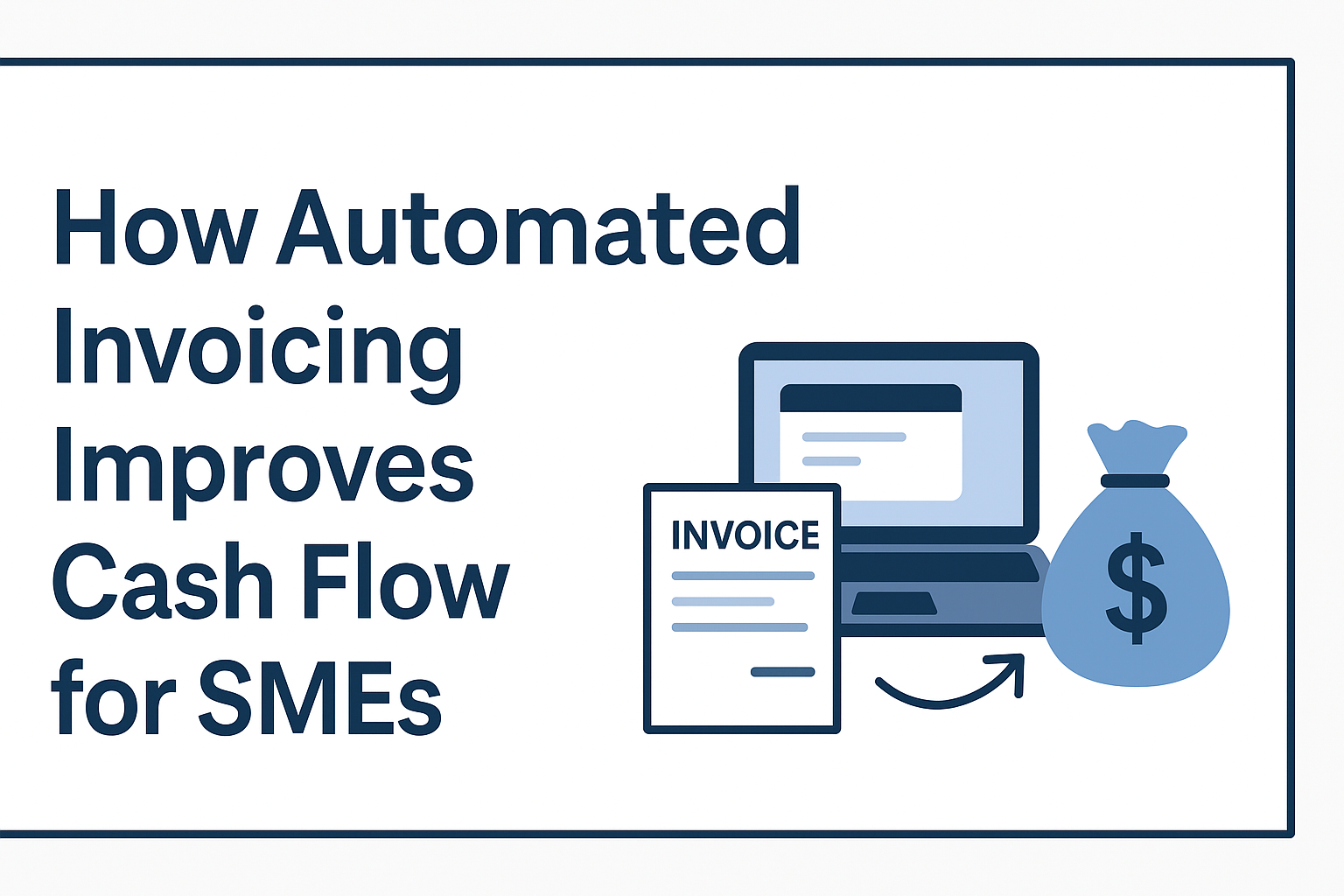How Automated Invoicing Improves Cash Flow for SMEs
In today’s fast-paced business world, managing finances effectively is a critical factor for the survival and growth of small and medium-sized enterprises (SMEs). Among the many financial challenges SMEs face, cash flow management stands at the top. Late payments, manual invoicing errors, and lack of visibility in accounts receivable can create unnecessary hurdles.
This is where automated invoicing comes in as a game-changer. By streamlining the billing process, minimizing errors, and ensuring timely payments, automated invoicing significantly improves cash flow for SMEs.
Why Cash Flow is the Lifeline for SMEs
Cash flow is often referred to as the “heartbeat” of an SME. Healthy cash flow ensures that businesses can pay employees on time, invest in growth opportunities, and maintain smooth operations.
Unfortunately, many SMEs struggle due to:
-
Delayed client payments
-
Human errors in manual invoicing
-
Lack of tracking and follow-up mechanisms
These problems can slow down operations and even threaten business survival. Adopting automated invoicing can address these concerns efficiently.
Benefits of Automated Invoicing for Cash Flow
1. Faster Payments
Automated invoicing systems generate invoices instantly and deliver them to clients electronically. Unlike manual processes that take time, automation reduces delays and encourages faster payment cycles.
2. Reduced Errors
Manual invoicing often leads to mistakes such as incorrect billing amounts, missing details, or duplicate entries. These errors not only cause disputes but also delay payments. Automation ensures accurate and error-free invoices, helping SMEs maintain steady cash inflows.
3. Improved Tracking and Reminders
With automated invoicing, SMEs can set up automatic payment reminders. This eliminates the need for manual follow-ups and ensures customers are consistently reminded of pending dues, reducing the chances of late payments.
4. Enhanced Transparency
Automation provides SMEs with real-time visibility into outstanding invoices and payment statuses. This helps businesses plan expenses better and maintain healthy cash flow.
5. Cost Savings
By reducing paperwork, labor costs, and time spent on invoicing, automation allows SMEs to allocate resources more efficiently. This directly contributes to better financial management and cash availability.
How Automated Invoicing Strengthens SME Growth
When SMEs adopt automated invoicing, they not only resolve cash flow challenges but also strengthen their overall growth strategy. Reliable cash inflow enables them to:
-
Expand operations without financial stress
-
Build stronger client relationships by ensuring professional billing practices
-
Invest in new opportunities with confidence
-
Improve financial forecasting with accurate data insights
Ultimately, SMEs become more resilient and competitive in the market.
Key Features to Look for in Automated Invoicing Tools
For SMEs considering automation, it’s important to choose a solution with the following features:
-
Easy integration with accounting software
-
Customizable invoice templates
-
Secure online payment options
-
Automated reminders and scheduling
-
Real-time reporting and analytics
These features ensure smooth operations and long-term benefits for financial health.
Final Thoughts
Cash flow challenges can make or break SMEs, but automation offers a clear solution. By eliminating delays, reducing errors, and improving transparency, automated invoicing improves cash flow for SMEs in a sustainable way.
In the digital era, SMEs that embrace automation not only gain financial stability but also set the stage for future growth.






